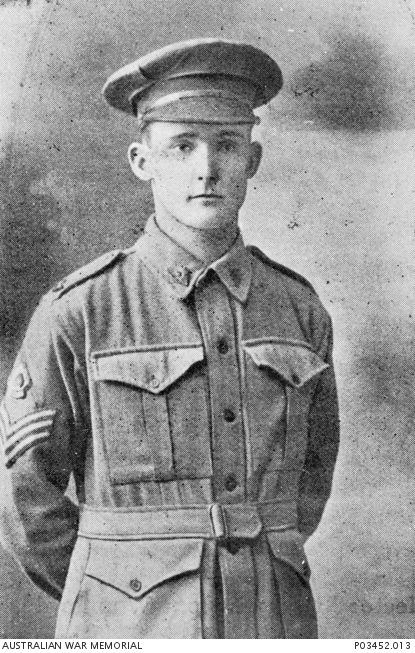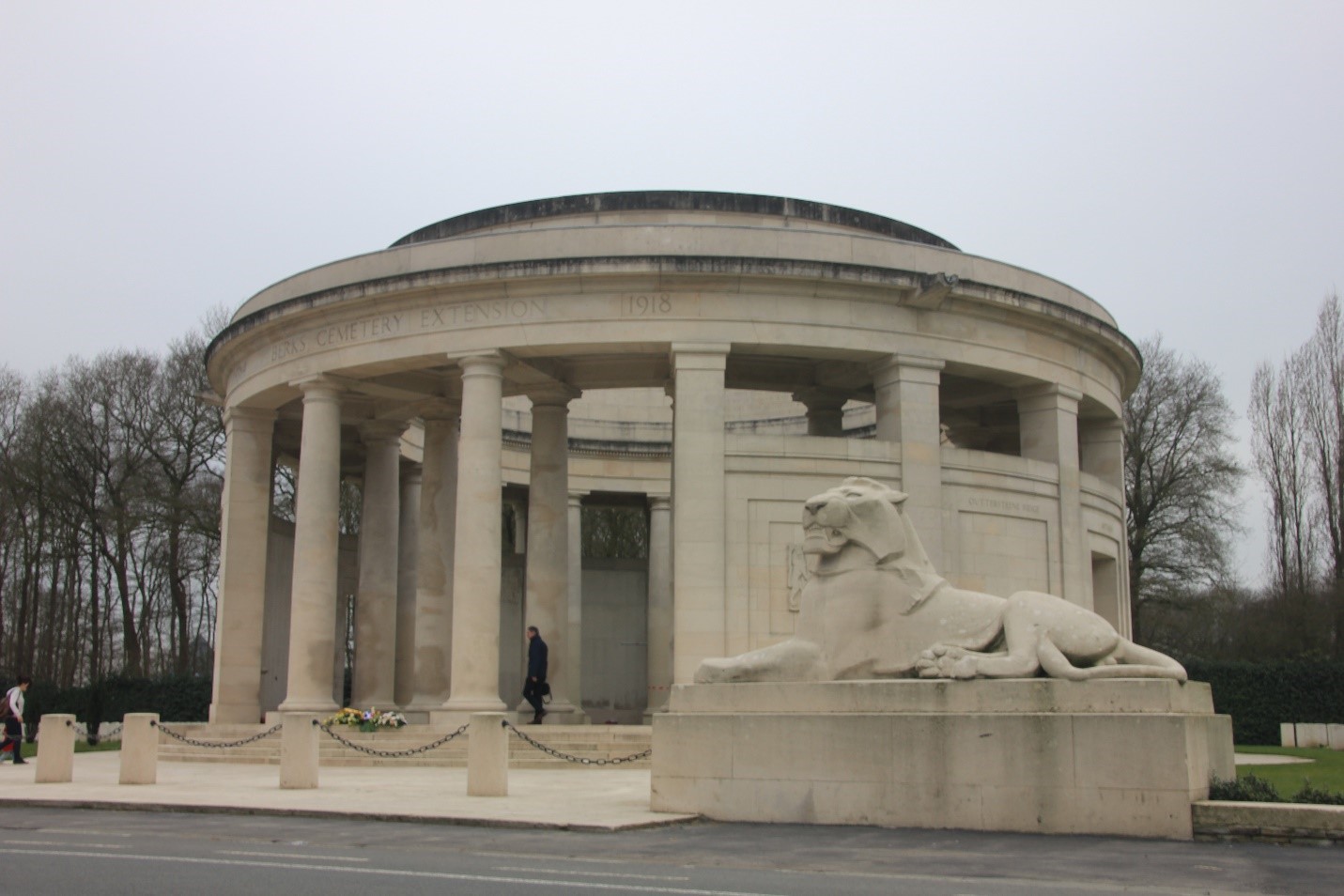Charles Chalmers Jameson was the son of Justice Charles Jameson of the Queensland District Court. He enlisted in Brisbane on 16 September 1915 but had a connection with Toowoomba through the Grammar School, which he attended until 1912. It seems he intended to have a career in the legal profession himself as he wrote his occupation as “judge’s advocate” on his attestation papers, although he was also enrolled at the University of Queensland.
Charles junior was born in Melbourne and was 19 years and 8 months old when he volunteered. He had some military experience in the 7th Infantry as part of the compulsory military training scheme of 1911. He was 5’7” tall; weighed 134 pounds, and had a fresh complexion, brown eyes and fair hair. He was of the Church of England religion. In his formative years he may have travelled extensively as his father sat on courts in several towns around the state, especially north Queensland.
At Enoggera Charles was posted to the 42nd Battalion, 11th Brigade, of the new 3rd Division. He was promoted rapidly and became a warrant officer (WO2 and CSM) in B Company the day before the battalion sailed for overseas service. The battalion left Sydney aboard A30 Borda on 5 June 1916 bound for Southampton. In England, during training in Wiltshire, Charles received an officer’s commission, becoming a 2/Lieutenant on 6 September 1916. In late November the battalion was transferred to France and the trenches.
Inexperienced units were usually allocated a quiet area, often referred to as “nursery sectors” to gain experience in trench fighting. The 42nd spent time in the border district between France and Belgium for several months until they were ready for their first major offensive at Messines in June 1917. In April the battalion was in the trenches at Ploegsteert, 4 kilometres north of the border. The nearby town was referred to by the Tommies and Diggers as “Plug Street”. On the night of 4 April Charles Jameson led a patrol of about 10 men into No-Man’s-Land to probe the German defences. The patrol encountered a strong German patrol and engaged them. In the fight that ensued Charles was fatally wounded by small-arms fire, and brought back to the battalion’s lines.
The Red Cross took witness statements from 30 men, an extraordinary number, who described the clash and their admiration of Charles’ courageous leadership. One statement, from Sgt Kearney, suffices to express their memories of the incident:
He went out on a fighting patrol and as he approached the German wire the Germans sprung up to meet them. He and his party opened out and bombed them, killing them all, but a German bullet fired from a trench hit him in the forehead death being instantaneous. The others escaped and brought him back and a party under me took his body down to a Medical Station . . . and he was buried the next day and a very nice cross placed on his grave.
Charles was buried in the Berks (as in Berkshire) Cemetery Extension (grave I.E.24). He was 21 years old. Justice Jameson received the medals and commemorative symbols due to his son in the 1920s. Charles’ name is one of four occurring on the Mothers’ Memorial that are also entered on the University of Queensland Honour Roll located in the entrance to the Forgan Smith Building at St Lucia in Brisbane.
Interestingly, the Berks Cemetery holds 876 Commonwealth war graves as well as the Ploegsteert Memorial, dedicated to the 11 000 British servicemen who died and have no known grave in this “quiet sector” of the Great War. The missing Australians in Belgium are commemorated at the Menin Gate in Ypres. Charles’ younger brother Fred served in the 11th Light Horse and survived through 1917 and 1918, despite prolonged bouts of malaria and dysentery.
The colour patch of the 42nd was oval in shape, made in two colours, and worn at the top of either sleeve of both tunics and overcoats. The bottom colour represented the brigade and the top colour designated the battalion. The 11th Brigade colour was Saxe Blue and the 42nd Battalion Dark Blue. The Battalion motto for the 42nd was Cede Nullis (yield to none) and bore the same regimental number as the Highland Regiment called “The Black Watch”. As a result it was jocularly referred to as “The Australian Black Watch”, although, ironically, the 42nd contained a large number of men of Scottish descent.
Toowoomba Grammar School Archive Records state that he started at the school on 30th January 1907 and left on 17th June 1910. The School Magazine dated May 1917 states, ‘C. C. Jameson, son of Judge Jameson, of Townsville, was here for a brief period in 1910. He matriculated from Townsville G. ‘S. and entered Emmanuel College and enlisted in 1915. He received his commission in the 42nd Battalion and was killed in action on April 5th, 1917. Age, 21 years. Lieut. Jameson was a keen athlete and represented the University in the Inter-University sports.’
External Links
National Archives of Australia Military Records
Australian Red Cross Society Wounded and Missing
AWM4 AIF unit war diaries 23/59/6 42nd BN April 1917
Echoes of War: Ploegsteert Wood, Messines and Wytschaete
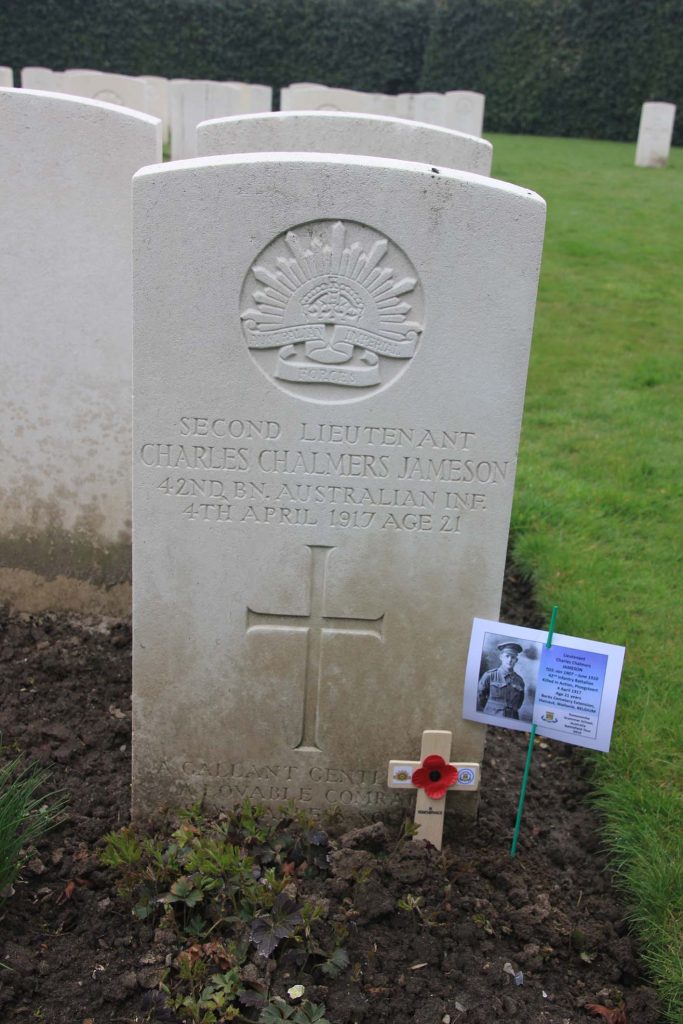
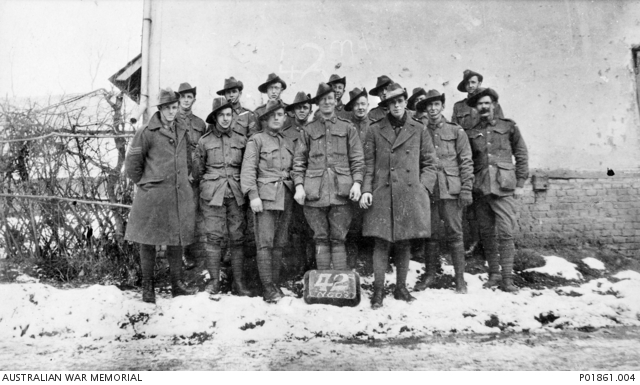
Group of soldiers from the 42Bn in winter
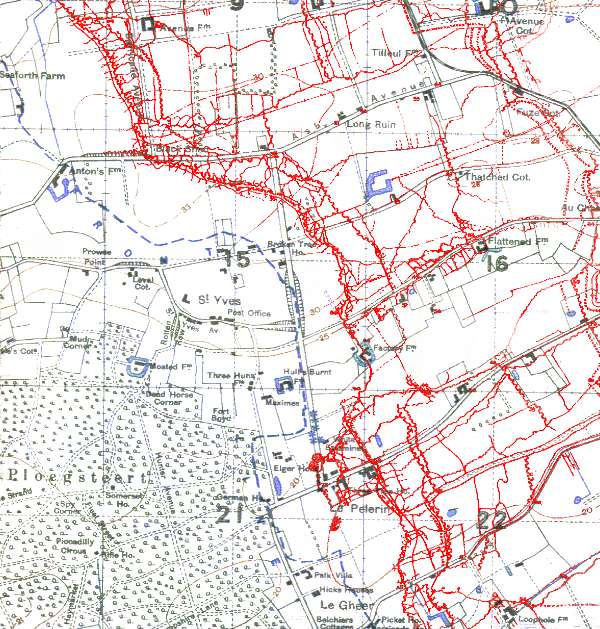
Ploegsteert Wood, Belgium Trench Map 1917
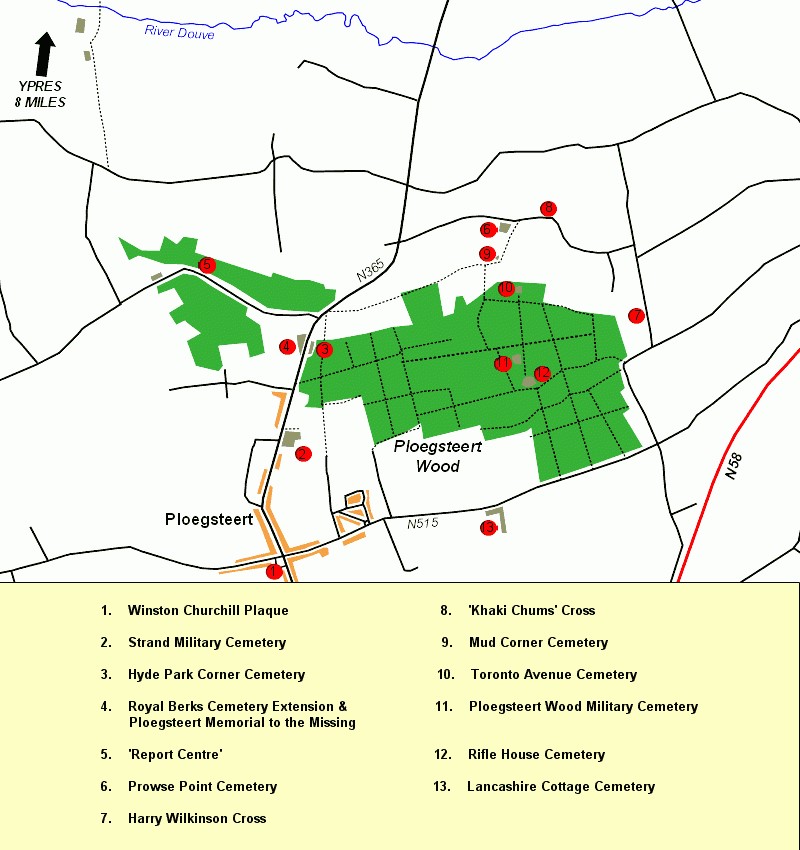
Ploegstreert Guide to Cemeteries
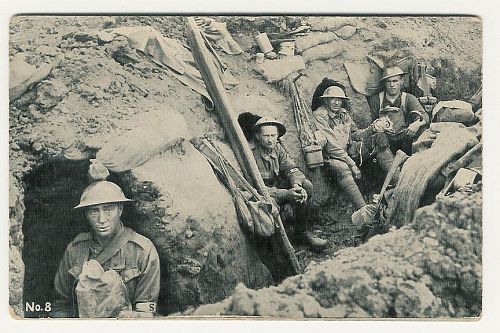
Postcard remembering 42Bn AWM


